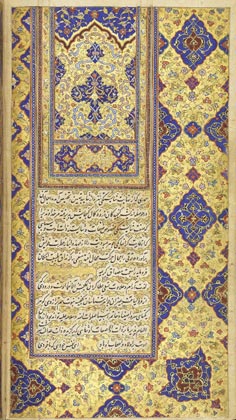Persian Manuscripts at the John Rylands Library
Alan Williams (Professor of Iranian Studies and Comparative Religion, The University of Manchester) and Jake Benson (Research Associate, The University of Manchester)

This project catalogues and digitizes Persian manuscripts spanning the 13th to 19th centuries held in the John Rylands Library. The bulk of the collection was purchased in 1901 from James Ludovic Lindsay, 26th Earl of Crawford (d. 1913) by Enriqueta Rylands (d. 1908) and bequeathed by her to the Library.
Research Associate Jake Benson is inspecting the manuscripts in order to revise existing records in the Text Encoding Initiative (TEI) metadata standard. These records are contributed to the UK union Catalogue Fihrist and will also be featured alongside high-quality digital images in Manchester Digital Collections.
The manuscripts were previously owned by prominent scholars and collectors such as Silvestre de Sacy (d. 1838), Nathaniel Bland (d. 1865), George William Hamilton (d. 1868), Duncan Forbes (d. 1868), and Samuel Robinson (d. 1884); some volumes were transferred from Manchester’s Chetham Library.
Among the highlights are Persian MS 843, dated AH 681/1282 CE, which is the earliest known copy of the Ḥadīqat al-Ḥaqīqat (Garden of Truth) of Hakim Sana’i (d. ca. 1131–41), and Persian MS 68, a redaction of Kalīla va Dimna-yi Bahram Shāhī by Abu’l-Ma‘ali Nasrullah Munshi completed in AH 616/1219 CE, which is not only the oldest manuscript in the collection— and the third oldest known to survive— but it was also formerly owned by the Ottoman ruler Sultan Beyazid II (r. 1481–1512).
This research has also revealed other manuscripts formerly held in the royal libraries of the Mughal emperors and the kings of Awadh in Lucknow.
Current projects
Our research work is improving our understanding of people, cultures and societies around the world.
Read more
Past projects
An overview of completed projects from the John Rylands Research Institute and Library dating from 2017.
Read more
